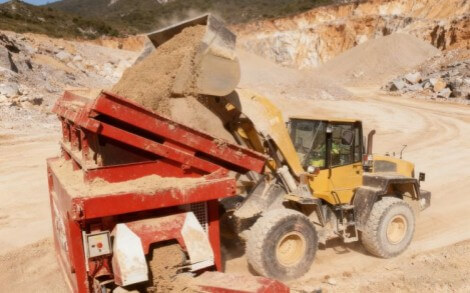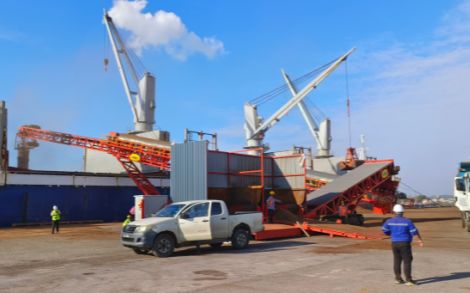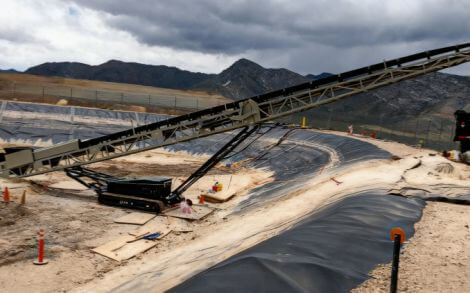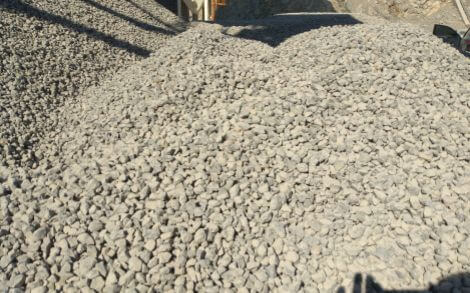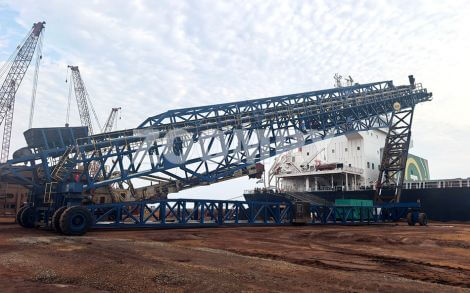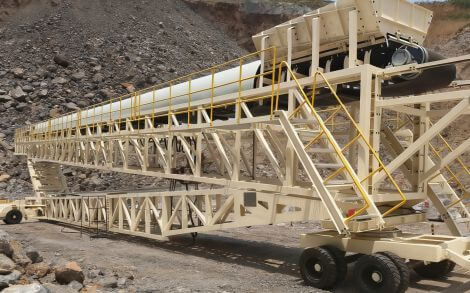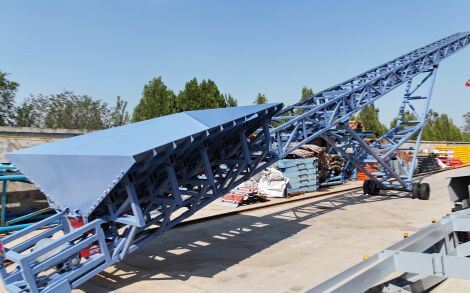-
2025 Mainstream Bulk Material Handling Equipment for Ports - Mobile Ship Loaders
Port operations in 2025 have entered an era of "multi-dimensional efficiency competition". Traditional large-capacity bulk material handling equipment (fixed ship loaders, dump trucks + fixed conveyor lines, etc.) struggle to meet new demands due to inherent limitations: Fixed ship loaders are restricted by concrete foundations and track layouts, making cross-berth operations impossible. If por… -
ZOOMRY's New-Generation ZRSL Mobile Ship Loader: Bulk Material Handling Surpasses 3000 Tons per Hour
ZOOMRY's ZRSL Series Mobile Ship Loader is an advanced equipment specially designed to solve the problem of rapid loading and unloading of bulk materials. Focusing on the loading needs of high-volume bulk materials such as iron ore, sand, aggregates, and palm kernel shells at ports and mine terminals, the equipment integrates ZOOMRY's profound technical accumulation in the field of material convey… -
How Does a Heavy Duty Hopper Feeder Work at a Mine Site?
The core function of the Heavy Duty Hopper Feeder is to accurately receive heavy bulk materials such as iron ore, coal, and granite transported by loaders and excavators. After smoothly accepting these materials from storage silos or job sites, it continuously and evenly conveys them to downstream equipment including crushers, belt conveyors, and mobile shiploaders, serving as the core support for… -
Mobile Truck Unloader Conveyor: An Efficient Transfer Solution for Global Bulk Material Unloading
In the global bulk material handling industry, the efficiency and stability of the unloading and transfer process directly determine the smoothness of the entire production chain. Whether it is ore turnover in mining, bulk cargo distribution in ports, or aggregate transport in the construction materials industry, traditional unloading methods often face challenges: excessive reliance on manual coo… -
What is a Hopper Feeder Conveyor?
Also known as grasshopper conveyor and portable stacker, the hopper feeder conveyor is a bulk material equipment integrating material receiving, quantitative conveying, and multi-terrain movement. It can work efficiently with belt conveyors, mobile ship loaders, etc., and is suitable for global bulk material handling scenarios such as mining, ports, chemical engineering, and power generation.… -
Capacity Improvement Solution for Limestone Radial Stackers
As a core raw material for cement production, limestone brings many challenges to most enterprises in the stacking process: the existing limestone radial stackers are limited by their designed capacity and cannot match the combined output capacity of the crushing system, forcing the crushers to operate at reduced capacity; the equipment consumes excessive energy during operation, with power consum… -
How to Use Telescopic Shiploaders for Iron Ore Bulk Material Conveying
transportation and port transshipment: high-load equipment vulnerability, difficulty adapting to multiple ship types, high material loss from spillage, and frequent failures in complex environments. Traditional fixed shiploaders, due to insufficient flexibility and limited adaptability, struggle to meet the high-efficiency and low-loss requirements of modern iron ore bulk material conveying. The t… -
What Are the Application Scenarios Suitable for Mobile Stacker Conveyors
In the global bulk material handling system, from the transfer and storage of industrial raw materials to the circulation of civil materials, "scenario adaptability" directly determines the efficiency and cost of bulk material handling. As a key piece of equipment in bulk material conveying systems, mobile stacker conveyors, with the combination of movable chassis and adjustable stacking mechanism… -
Port Bulk Material Conveying Solution Using Multiple Hopper Feeders
In the global field of port bulk material conveying, "efficient connection, low consumption & environmental protection, and flexible adaptation" are the core demands of enterprises. Whether it is the full link of unloading-stockpiling-loading for bulk materials such as coal and ore, the dynamic adaptation of ships of different tonnages, or the challenge of height difference operations caused by po…

 ZOOMRY
ZOOMRY



